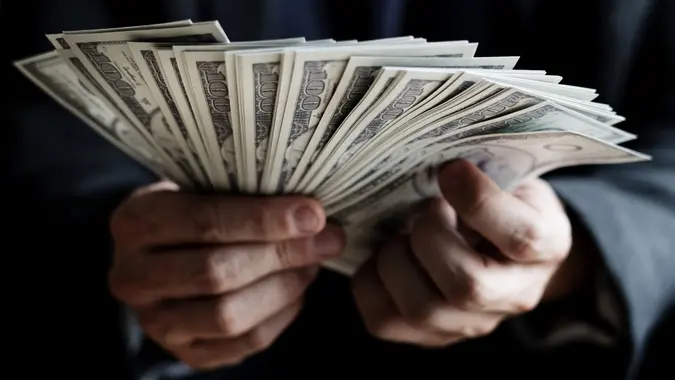Graham Stephan on Rate Cuts: Here’s Where I’m Putting My Money in 2024

Commitment to Our Readers
GOBankingRates' editorial team is committed to bringing you unbiased reviews and information. We use data-driven methodologies to evaluate financial products and services - our reviews and ratings are not influenced by advertisers. You can read more about our editorial guidelines and our products and services review methodology.

20 Years
Helping You Live Richer

Reviewed
by Experts

Trusted by
Millions of Readers
Graham Stephan is a financial personality with over 4.6 million subscribers to his YouTube channel. In a late 2023 video, Stephan commented on the Federal Reserve’s decision to pause interest rate hikes and begin lowering them in 2024. According to Stephan, this may have a significant effect on financial markets.
Here’s Stephan’s analysis of why the Fed is changing its tune and how he plans to invest in 2024 in response to the news.
Why the Change in Fed Strategy?
One of the Fed’s primary mandates is to keep inflation under control, which the Fed currently defines as about 2% annually. But in June 2022, the CPI hit an astounding 9.1%, meaning prices across the board had jumped over 9% from the year prior.
To keep inflation from spiraling out of control, the Fed undertook an aggressive series of interest rate hikes. From March 17, 2022, to July 26, 2023, the Fed raised rates 11 separate times, boosting the federal funds rate from a range of 0.25%-0.50% to 5.25%-5.50%.
In his YouTube video, Stephan explains that the change in Fed strategy was initiated by the fact that the interest rate hike cycle was working. Data from November 2023 shows that the inflation rate had slowed to 3.1%. While not quite at the 2% Fed target, that’s a dramatic decline from the 9.1% rate in 2022. Since it takes a while for interest rate hikes to fully make their way through the economy, the Fed is taking their foot off the gas.
How Might This Affect Investments?
With the Fed switching from a rate hike cycle to a pause, with rate cuts on the horizon, the investment outlook has changed dramatically. When interest rates and inflation are high, costs for both consumers and businesses are increased. All types of loans — from corporate ones to personal auto loans, credit cards and home mortgages — cost more, which dampens demand in the economy. This can lead to lower earnings and stock prices and can increase the chance of a recession and job losses.
But when the Fed changes direction, the opposite happens. Loan interest rates fall, which means both businesses and individuals pay less to borrow, effectively increasing their cash flow. Demand typically increases for purchases that are usually financed, such as houses and cars. All-in-all, spending generally goes up, leading to higher corporate profits and stock prices.
As interest rates fall, bond prices rise, as well. In the broadest sense, stock and bond markets tend to do well when the Fed is lowering interest rates, as opposed to hiking them.
How Is Stephan Responding?
Stephan is a long-term investor, not a trader. Thus, regardless of changes in fiscal or monetary policy, or even specific economic conditions, he continues to invest on a consistent basis.
As to what he invests in, Stephan said, “I’m diversifying across stocks, real estate, cash, treasuries and a small amount of bitcoin, and I’m just staying the course, as usual. My mindset is that if the market ends 2024 in the green, great — I’ve made a profit. But if it ends in the red and it goes down, that just means that I’m able to buy everything for less than I’m able to buy today.”
What Is the Updated Status of Fed Cuts in 2024?
Stephan’s video was posted in December 2023, shortly after the Fed announced its shift in strategy. Cut to the end of February 2024, and things have come into a bit sharper focus.
Originally, many economists and market experts felt that the Fed would start cutting rates in early 2024, but the Fed is putting those hopes on the back burner for now. Fed Chair Jerome Powell is on record as saying that a March cut is highly unlikely, and economists now predict that the first rate cut might not come until June or even later.
This could change the “go-go-go” landscape that Stephan and many others were hoping for at the end of December 2023. The longer the Fed waits, economists say, the more likely they will act too late, and the economy will tip into a recession, after all. Add in the fact that there’s not much the market likes less than uncertainty, and there is now much more of a question mark over the investment landscape in 2024.
Thus far, markets are still moving in a positive direction, with the S&P 500 recently setting a new all-time high and up 6.69% YTD as of Feb. 23, 2024. But the longer the Fed waits to cut rates, investors are more likely to get the jitters, so it’s something that bears close watching.
 Written by
Written by  Edited by
Edited by 

























